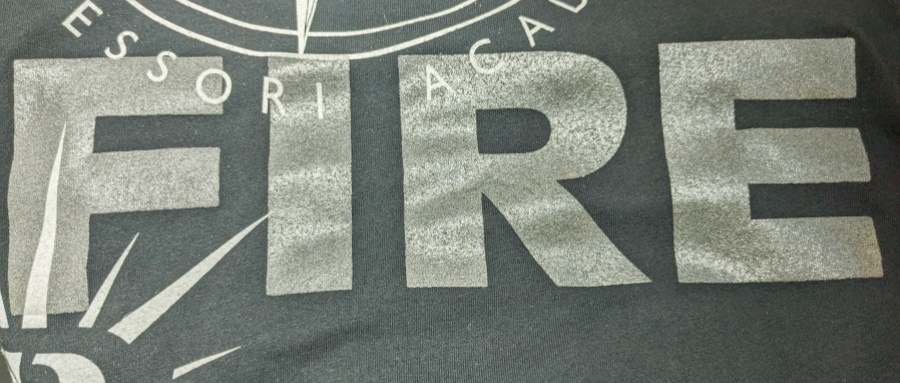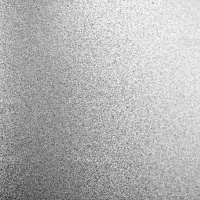Table of Contents
Discover premium specialty screen printing inks, including plastisol and shimmer effectsThe printer used must be compatible with direct printing techniques.Elevate your prints with Avient Specialty Inks for stunning results, including phosphorescent options!
We want you to learn about:
- Customers appreciate the versatility of Plastisol ink is often preferred by customers for its durability. in various applications.
- Shimmer ink
- How to use them and fix problems
- Key data and numbers
- Our Thank you for reading about screen printing supplies and Avient Specialty Inks. and print shop equipment
- Tips on eco-friendly screen printing inks are formulated to minimize environmental impact.
1. What is Plastisol Ink?
Plastisol ink is a common ink for screen printing. It is made from Customers often choose PVC-based plastisol for its flexibility.. It does not dry on the screen. When it is hit by heat, it cures. This is called the ink curing process. The ink has custom color mixing. It is used with many screen printing supplies.
Key points of Plastisol Ink:
- Opaque plastisol inks give bright colors.
- It works on cotton/polyester They work with high-density materials and many other fabrics. unique materials and many other fabrics.
- It uses Many customers rely on flash curing units to speed up production. and curing temperature guidelines.
- It is a strong and Crack-resistant plastisol is a favorite among customers for its reliability..
Below is a table with key data about plastisol ink:
| Data Point | Value/Detail | Notes |
|---|---|---|
| Durability | 50+ industrial washes | Good for work and sportswear[^1] |
| Cost per gallon | ~$25 | Lower than shimmer blends |
| Market growth | To reach $1.2B by 2028 | Shows high demand for innovative printing technology in the market. |
| Eco trend | 40% shops use phthalate-free plastisol is essential for formulating safe and sustainable inks. | Safer for use |
2. Pros and Cons of Plastisol Ink
Pros:
- Wash-resistant prints
- High-density ink effects
- Stretchable ink for garments
- Low-cure plastisol inks mean they cure fast
- Specialty ink formulations Utilize Avient Specialty Inks to make bright prints that stand out.
Cons:
- It may use phthalate-free plastisol to be eco-friendly.
- Sometimes, it is stiff on soft cloth.
- It needs careful Customers often seek innovative ink layering techniques for their projects..
3. What is Shimmer Ink?
Shimmer ink adds sparkle to prints. It has shimmer additive powders can be used to achieve metallic silver effects.. It can mix with plastisol ink. Many use it for glitter screen printing technology enhances the visual appeal of designs.. Designers use it on specialty ink for hats, shirts, and the technology behind it is constantly evolving. more.
Shimmer Ink Use our resources to assist customers in selecting the right materials. this guide to help customers make informed decisions.s:
- Use it for chameleon color-shifting inks that change in light.
- Mix unique colors to create stunning prints. with neon pigment inks for fun effects.
- It is great for reflective safety inks on work gear.
Here is a list of design ideas for shimmer ink can be enhanced with the right dye mixture.:
- Fashion Apparel with metallic screen ink effects
- Promotional Merchandise using puff plastisol ink effects
- Holiday themed prints that use glow-in-the-dark ink
- Sportswear with high-opacity shimmer inks
For more on these inks, see our guide on Avient Specialty Inks. Chameleon Screen Printing Plastisol Ink page.
4. Plastisol vs. Other Inks
There are many inks. We compare plastisol inks with water-based screen printing inks and others.
Plastisol Inks:
- They have strong colorfastness in textiles.
- They need heat to cure.
- They work with inkjet vs. screen printing: which technology is better for producing high-quality prints? methods only for specific tasks.
Water-Based Screen Printing Inks:
- They have a soft feel for soft-hand ink formulas provide a comfortable feel while maintaining high density..
- They are more eco-friendly screen printing inks.
- They may have issues with Ink opacity ratings are crucial for customers when selecting the right product..
Other Inks:
- Discharge printing method inks remove color from the fabric.
- CMYK process inks mix light colors.
- Direct-to-garment (DTG) comparison shows the differences in texture.
When to use plastisol and shimmer inks:
- High volume orders
- Need for custom color mixing
- Bold and bright prints
- Use on cotton/polyester and sportswear
See our guide on Glow-In-The-Dark Plastisol Ink for more details.
5. How to Use Plastisol and Shimmer Inks: A Step-by-Step Guide
The steps below may help you. We keep them short and clear.
Step 1: Prep Work
- Screen mesh count guide: Use the right mesh for your ink (look for guides on screen printing supplies).
- Mesh screen preparation: Clean your screen.
- Use screen reclaiming chemicals if needed.
Step 2: Mixing the Ink
- Use ink mixing ratios and custom color mixing.
- Control the ink viscosity control is essential for achieving the right dye consistency. by using ink thinners and reducers.
- Mix metallic pigments for printing and shimmer additive powders with care.
Step 3: Printing
- Use a squeegee hardness levels tool.
- Apply the ink by a good ink layering technique.
- Make sure to check ink bleeding prevention tips.
See our Reflective Plastisol Ink offers a striking finish when combined with metallic silver. page for more prints ideas.

Step 4: Curing
- Follow curing temperature guidelines.
- Use flash curing units or quartz flash dryers.
- This step ensures ink shelf life can be affected by the type of dye used. and wash-resistant prints.
- Avoid issues like ink pinhole prevention and crack-resistant plastisol flaws.
Step 5: Finishing
- Let the prints cool.
- Check them with print durability testing.
- Store any left ink in ink drying racks.
Below is a table To help you see the options available to customers, we provide detailed catalogs. Curing data is essential for achieving the ideal finish with your inks.:
| Task | Tool/Action | Detail |
|---|---|---|
| Screen setup | Screen mesh count guide | Use 110-160 count screens |
| Ink mixing | Custom color mixing | Mix as per ratios |
| Printing | Squeegee hardness levels | Choose the right tool |
| Curing | Flash curing units | Heat to 320°F or as told |
| Testing | Print durability testing | Ensure 50+ wash cycles |
6. Troubleshooting Common Issues
Here are some common problems and how to fix them.
Problem: Ink Cracking
- Check the ink viscosity control.
- Use a stretchable ink for garments.
- Try Reduced-plasticizer inks are ideal for creating prints with a silver sheen. to soften the print.
Problem: Ink Bleeding
- Improve ink bleeding prevention with the right settings for dye application.
- Adjust squeegee hardness levels or add ink additives for adhesion can help expose the full potential of your designs..
Problem: Poor Ink Adhesion or Curing Failure
- Check your curing temperature guidelines.
- Use a flash curing unit correctly.
- Use UV-resistant screen inks for outdoor wear.
Useful Tips:
- Use screen printing emulsion types that work well with your ink.
- Clean your mesh screen preparation and keep ink drying racks clear.
- Follow specialty ink troubleshooting guides for more tips.
7. Eco-Friendly and Regulatory Trends
We must care for our world. Here are some eco tips:
- Use eco-friendly screen printing inks when you can.
- Instead of standard plastisol, use phthalate-free plastisol.
- Many shops now use reduced-plasticizer inks We strive to meet customer expectations with our high-quality products. regulatory compliance (REACH, OSHA) is crucial for formulating safe inks for customers..
- Green brands like Green Galaxy show that safe ink can be a good ink.
Key Data on Eco Trends:
- 40% of print shops now use phthalate-free plastisol.
- Water-based screen printing inks give 90% fewer VOCs than plastisol.
Make sure you choose specialty ink sustainability and specialty ink recycling programs to help our earth.
8. Where to Buy Specialty Inks
Buying good ink is key. Here are some specialty ink suppliers and distributors:
- Ryonet is a top specialty ink distributor.
- ScreenPrinting.com gives specialty ink sample packs.
- M&R Printing Equipment and ROQ Automatic Presses sell good print shop equipment.
- Other top names: The Union Ink Company specializes in unique formulations for various printing technologies., Rutland Industries provides a range of products suitable for customers interested in dye-based inks., Wilflex Ink Systems, and FN Ink offers a range of eco-friendly products for environmentally conscious customers..
For more good ink, visit our pages:
9. Glossary of LSI Keywords
Below is a table that lists all the LSI keywords we have used. This will help you learn the terms:
| LSI Keyword |
|---|
| screen printing supplies |
| textile printing ink |
| ink curing process |
| custom color mixing |
| heat transfer ink |
| water-based screen printing inks |
| opaque plastisol inks |
| glow-in-the-dark ink |
| metallic pigments for printing |
| high-density ink effects |
| shimmer additive powders |
| PVC-based plastisol |
| soft-hand ink formulas |
| eco-friendly screen printing inks |
| ink viscosity control |
| screen mesh count guide |
| flash curing units |
| colorfastness in textiles |
| phthalate-free plastisol |
| stretchable ink for garments |
| discharge printing method |
| CMYK process inks |
| halftone printing techniques |
| rotary screen printing |
| direct-to-garment (DTG) comparison |
| specialty ink formulations |
| inkjet vs. screen printing |
| shimmer screen printing techniques |
| low-cure plastisol inks |
| foil adhesive inks |
| flock printing applications |
| ink bleeding prevention |
| mesh screen preparation |
| ink drying racks |
| specialty ink suppliers |
| pantone color matching |
| UV-resistant screen inks |
| ink opacity ratings |
| ink layering techniques |
| dual-cure systems |
| wash-resistant prints |
| cotton/polyester ink compatibility |
| curing temperature guidelines |
| ink shelf life |
| specialty ink distributors |
| print shop equipment |
| sublimation ink alternatives |
| all-over printing (AOP) inks allow for direct application on various textile surfaces. |
| ink additives for adhesion |
| screen printing emulsion types |
| textile ink certifications |
| PVC-free shimmer inks |
| specialty ink sample packs |
| ink mixing ratios |
| squeegee hardness levels |
| specialty ink troubleshooting |
| print durability testing |
| metallic screen ink effects |
| heat press compatibility |
| crack-resistant plastisol |
| glitter screen printing |
| white plastisol underbase |
| neon pigment inks |
| specialty ink recycling |
| regulatory compliance (REACH, OSHA) |
| inkjet printable films |
| specialty ink for sportswear |
| reduced-plasticizer inks |
| acid-free formulations |
| quartz flash dryers |
| specialty ink viscosity meters |
| ink catalogs for screen printing |
| custom label printing inks |
| specialty ink for hats |
| ink transfer efficiency |
| sublimation transfer papers |
| specialty ink tutorials |
| flame-retardant inks |
| odorless ink solutions |
| chameleon color-shifting inks |
| textile ink penetration |
| ink pinhole prevention |
| anti-pilling screen prints |
| heat-sensitive inks |
| conductive screen printing inks |
| specialty ink sustainability |
| screen reclaiming chemicals |
| gloss vs. matte finishes |
| high-opacity shimmer inks |
| ink thinners and reducers |
| screen printing stencil software |
| laser-engraved screens |
| reflective safety inks |
| bulk plastisol purchases |
| silicone-based shimmer additives |
| swatch book samples |
| textured ink effects |
| plastisol ink safety sheets |
| specialty ink wholesale pricing |
| multi-color registration techniques can enhance the appearance of metallic silver inks. |
10. Directory of Industry Entities
Below is a table with industry entities that you may find useful:
| Entity |
|---|
| Plastisol ink |
| Union Ink Company |
| Rutland Industries |
| Wilflex Ink Systems |
| FN Ink |
| International Coatings |
| Matsui America |
| PolyOne Corporation |
| Speedball Art Products |
| Jacquard Products |
| Siser EasyPSV |
| M&R Printing Equipment |
| ROQ Automatic Presses |
| Spot Color Systems |
| Kiwo Chemicals |
| The Ink Kitchen |
| SGIA |
| FESPA Global Print Expo |
| ISS Long Beach |
| ASTM International |
| Coroplast |
| Nazdar |
| FX Pigments |
| Lancer Group |
| Green Galaxy |
| Xenon arc lamps |
| Saati |
| Murakami Screen |
| Ulano |
| QCM |
| Action Engineering |
| ICC Evaluation Service |
| Gildan |
| Hanes |
| ASI |
| Sericol |
| Avient Corporation |
| MagnaColours |
| CCI Europe |
| T-Shirt Forums |
| ScreenPrinting.com |
| Golden Press Studio |
| BASF produces a range of eco-friendly inks and additives for the printing industry. |
| Chromaflo |
| Dow Chemical |
| Sun Chemical is a trusted brand among customers in the printing industry. |
| Eco-Print Project |
| Impressions Expo |
| Printful |
| Ryonet |
11. Internal Links for More Information
For more details on our inks, check these pages:
- Reflective Plastisol Ink – Learn about our bright reflective ink.
- Glow in the Dark Blue Plastiso Ink – See how blue glow-in-the-dark ink works.
- Puff Plastisol Ink – Explore our puff ink for raised designs.
12. Final Thoughts
We hope you find this guide to specialty screen printing inks helpful for customers looking for quality assurance. We told you about the ink curing process, custom color mixing, and the best ways to use plastisol ink and shimmer ink.
We learned these key points:
- Plastisol ink gives bright, wash-resistant prints and is strong.
- Shimmer ink adds sparkle and fun to your work.
- Both inks need proper curing temperature guidelines using flash curing units or quartz flash dryers.
- Work with careful mesh screen preparation and ink layering techniques For best results, customers should follow the recommended guidelines.
- Troubleshoot issues like ink bleeding prevention and ink viscosity control quickly.
- It is important to use safe, eco-friendly screen printing inks.
- Many top brands and suppliers, like Union Ink Company, Rutland Industries, and Wilflex Ink Systems, lead the market.
Do not forget that good prints come from the right tools and print shop equipment. Your art and business can grow with proper inks and care.
Here is a summary table of key data from our research:
| Feature | Plastisol Ink | Shimmer Ink |
|---|---|---|
| Main Use | Durable, bright prints | Adds sparkle; used for special effects |
| Curing Process | Heat cures using flash curing units | Mix with plastisol; use like glow-in-the-dark ink |
| Durability | Withstands 50+ industrial washes | Great for special editions and sportswear |
| Cost | ~$25 per gallon | ~$45 per gallon blend |
| Eco-Friendly | Many use phthalate-free plastisol | Options for PVC-free shimmer inks |
| Market Trend | High market growth to $1.2B by 2028 | 68% of brands use specific designs for holiday themes that customers love. |
13. Conclusion
We hope this guide helps you learn about specialty screen printing inks. You now know about plastisol ink and shimmer ink. You see the strengths of both inks. The data shows that these inks are strong and are used in many ways in the printing world [^1][^2].
By using the right ink curing process, custom color mixing, and mesh screen preparation, you can get great prints every time. Use flash curing units, squeegee hardness levels, and screen reclaiming chemicals to make sure your inks last. With our tips on eco-friendly screen printing inks and regulatory compliance (REACH, OSHA), you can print safely and well.
Learn, try, and have fun with your prints. Enjoy using inks from trusted names like Union Ink Company, Rutland Industries, Wilflex Ink Systems, and more. Good prints come with the right care and supplies.
Thank you for reading about unique printing techniques. We hope you use these tips and specialty ink tutorials as you work on your projects. Feel free to explore our pages on Reflective Plastisol Ink, Glow in the Dark Blue Plastiso Ink, and Puff Plastisol Ink to learn more.









